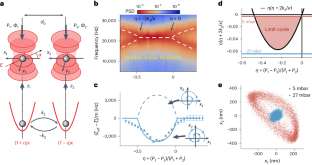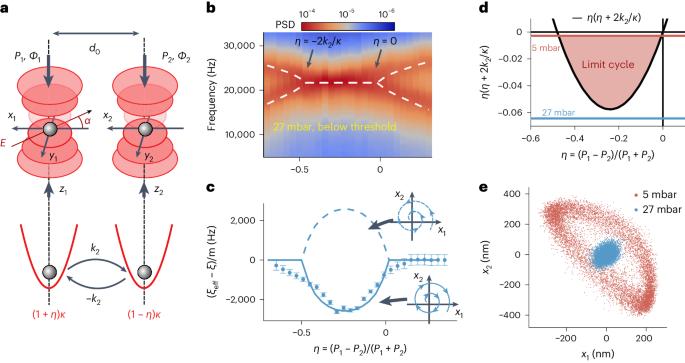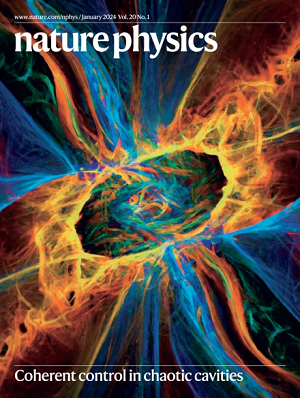在真空中悬浮的非互惠耦合光机械振荡器中的 PT 类相变和极限周期振荡
IF 17.6
1区 物理与天体物理
Q1 PHYSICS, MULTIDISCIPLINARY
引用次数: 0
摘要
在光学陷阱中悬浮的纳米粒子提供了一个多功能平台,可在参数可调的受控环境中研究机械振荡器。最近,将两个光机械振荡器耦合在一起成为可能。在这里,我们展示了这样一对非保守耦合振荡器的集体非赫米梯动力学。我们利用系统中粒子间光学相互作用的可调谐性,将粒子间的光学相互作用设定为纯粹的非互惠。通过不断改变捕获光束的相对功率,我们使系统经历了一个类似于奇偶时相变的转变。临界点的霍普夫分岔导致形成集体极限周期振荡,类似于在声子激光器中观察到的振荡。这些耦合悬浮振荡器为特殊点光机械传感提供了一个平台,并可扩展到多粒子系统,为拓扑光机械介质的发展铺平了道路。本文章由计算机程序翻译,如有差异,请以英文原文为准。


PT-like phase transition and limit cycle oscillations in non-reciprocally coupled optomechanical oscillators levitated in vacuum
Nanoparticles levitated in an optical trap provide a versatile platform to study mechanical oscillators in a controlled environment with tuneable parameters. Recently, it has become possible to couple two of these optomechanical oscillators. Here we demonstrate the collective non-Hermitian dynamics of such a pair of non-conservatively coupled oscillators. We take advantage of the tunability of the optical interactions between the particles in our system and set the optical interaction between the particles to be purely non-reciprocal. By continuously varying the relative power of the trapping beams, we take the system through a transition similar to a parity–time phase transition. A Hopf bifurcation at a critical point results in the formation of collective limit cycle oscillations, resembling those observed in phonon lasers. These coupled levitated oscillators provide a platform for exceptional point optomechanical sensing and can be extended to multi-particle systems, paving the way for the development of topological optomechanical media. Non-reciprocal interactions between two optically levitated nanoparticles allow the observation of non-Hermitian dynamics and a mechanical lasing transition, and suggest applications in optomechanical sensing.
求助全文
通过发布文献求助,成功后即可免费获取论文全文。
去求助
来源期刊

Nature Physics
物理-物理:综合
CiteScore
30.40
自引率
2.00%
发文量
349
审稿时长
4-8 weeks
期刊介绍:
Nature Physics is dedicated to publishing top-tier original research in physics with a fair and rigorous review process. It provides high visibility and access to a broad readership, maintaining high standards in copy editing and production, ensuring rapid publication, and maintaining independence from academic societies and other vested interests.
The journal presents two main research paper formats: Letters and Articles. Alongside primary research, Nature Physics serves as a central source for valuable information within the physics community through Review Articles, News & Views, Research Highlights covering crucial developments across the physics literature, Commentaries, Book Reviews, and Correspondence.
 求助内容:
求助内容: 应助结果提醒方式:
应助结果提醒方式:


